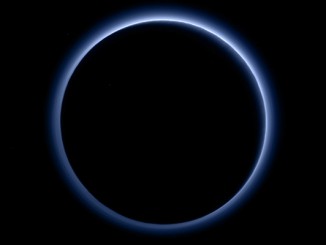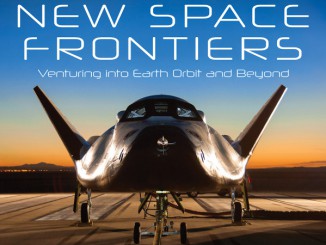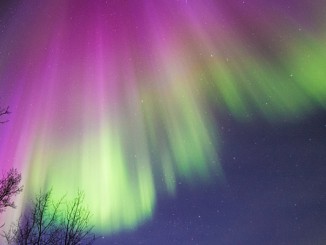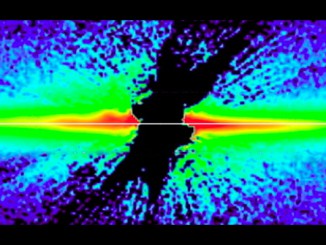
New Horizons finds blue skies and water ice on Pluto
The first colour images of Pluto’s atmospheric hazes returned by NASA’s New Horizons spacecraft last week — seen here backlit by the Sun — reveal that the hazes are blue. Also, in a second significant finding, New Horizons has detected numerous small, exposed regions of water ice on the dwarf planet.









